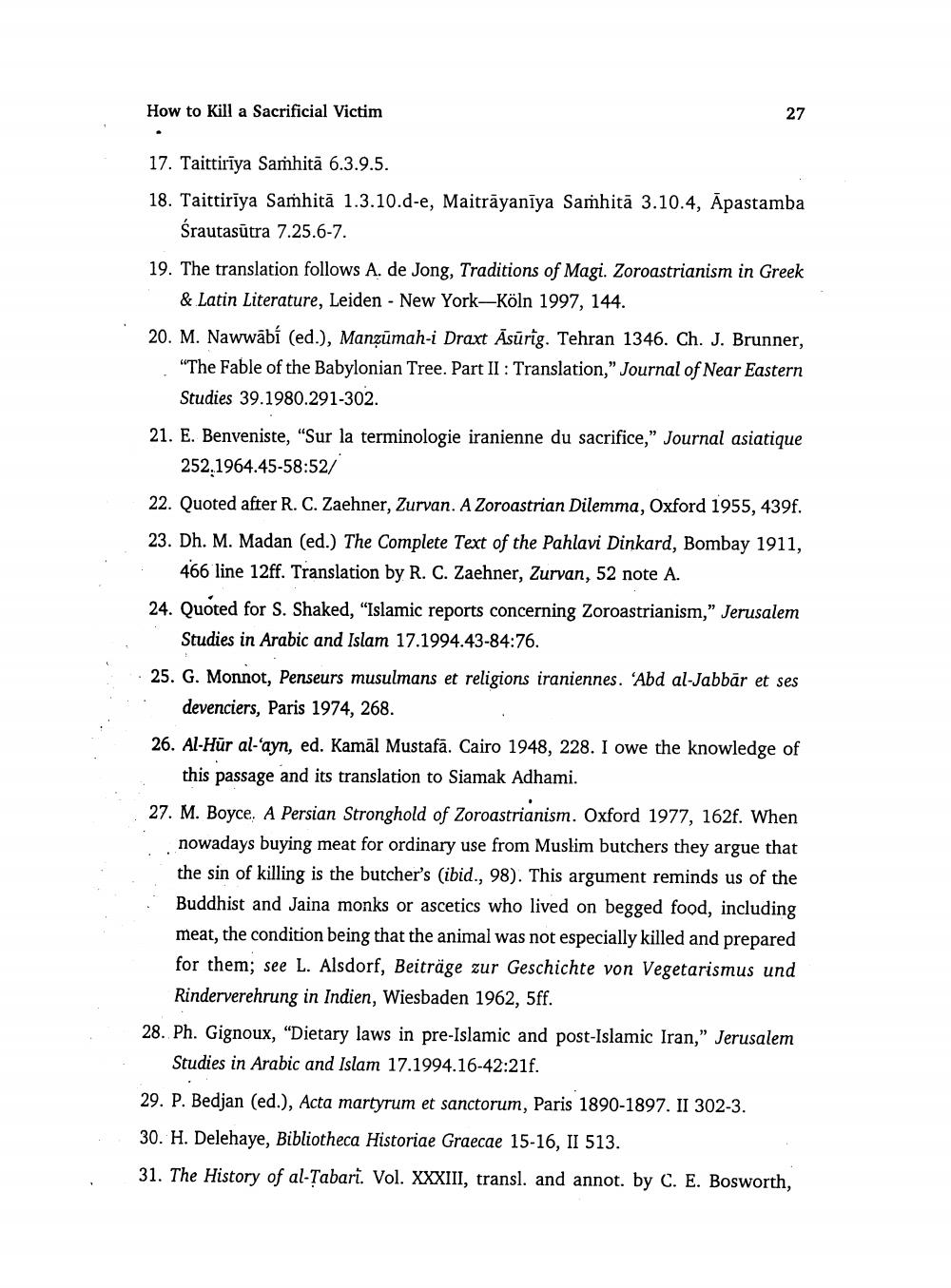________________
How to Kill a Sacrificial Victim
17. Taittirīya Samhitā 6.3.9.5. 18. Taittiriya Samhitā 1.3.10.d-e, Maitrāyaniya Samhitā 3.10.4, Apastamba
Śrautasūtra 7.25.6-7. 19. The translation follows A. de Jong, Traditions of Magi. Zoroastrianism in Greek
& Latin Literature, Leiden - New York-Köln 1997, 144. 20. M. Nawwābí (ed.), Mangūmah-i Draxt Asūrig. Tehran 1346. Ch. J. Brunner,
"The Fable of the Babylonian Tree. Part II : Translation,” Journal of Near Eastern
Studies 39.1980.291-302. 21. E. Benveniste, “Sur la terminologie iranienne du sacrifice,” Journal asiatique
252.1964.45-58:52/ 22. Quoted after R. C. Zaehner, Zurvan. A Zoroastrian Dilemma, Oxford 1955, 439f. 23. Dh. M. Madan (ed.) The Complete Text of the Pahlavi Dinkard, Bombay 1911,
466 line 12ff. Translation by R. C. Zaehner, Zurvan, 52 note A. 24. Quoted for S. Shaked, “Islamic reports concerning Zoroastrianism,” Jerusalem
Studies in Arabic and Islam 17.1994.43-84:76. 25. G. Monnot, Penseurs musulmans et religions iraniennes. 'Abd al-Jabbār et ses
devenciers, Paris 1974, 268. 26. Al-Hür al-'ayn, ed. Kamal Mustafā. Cairo 1948, 228. I owe the knowledge of
this passage and its translation to Siamak Adhami. 27. M. Boyce. A Persian Stronghold of Zoroastrianism. Oxford 1977, 162f. When
nowadays buying meat for ordinary use from Muslim butchers they argue that the sin of killing is the butcher's (ibid., 98). This argument reminds us of the Buddhist and Jaina monks or ascetics who lived on begged food, including meat, the condition being that the animal was not especially killed and prepared for them; see L. Alsdorf, Beiträge zur Geschichte von Vegetarismus und
Rinderverehrung in Indien, Wiesbaden 1962, 5ff. 28. Ph. Gignoux, “Dietary laws in pre-Islamic and post-Islamic Iran,” Jerusalem
Studies in Arabic and Islam 17.1994.16-42:21f. 29. P. Bedjan (ed.), Acta martyrum et sanctorum, Paris 1890-1897. II 302-3. 30. H. Delehaye, Bibliotheca Historiae Graecae 15-16, II 513. 31. The History of al-Tabari. Vol. XXXIII, transl. and annot. by C. E. Bosworth,




